Trivia Browser
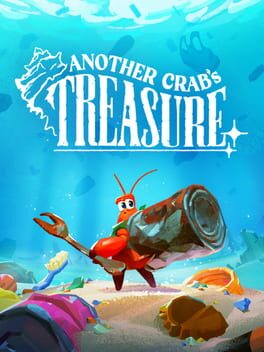
▲
1
▼
Just before fighting Spoiler:Praya Dubia towards the end of the game, the background music that plays in the lead-up to the boss fight is a song titled "Crab Grave". The title of the song and its core notes (while not sharing the exact same melody) are a reference to "Crab Rave", a house song composed by Irish electronic music producer Noisestorm and accompanied by a CGI music video depicting crabs dancing on a remote island that later became a meme.
Another Crab's Treasure - Crab Grave:
https://www.youtube.com/watch?v=GR66yjbmZkY
Noisestorm - Crab Rave:
https://www.youtube.com/watch?v=LDU_Txk06tM
Another Crab's Treasure - Boss fight lead-up with Crab Grave song:
https://www.youtube.com/watch?v=hw1PtWzjPGw
KnowYourMeme article:
https://knowyourmeme.com/memes/crab-rave
https://www.youtube.com/watch?v=GR66yjbmZkY
Noisestorm - Crab Rave:
https://www.youtube.com/watch?v=LDU_Txk06tM
Another Crab's Treasure - Boss fight lead-up with Crab Grave song:
https://www.youtube.com/watch?v=hw1PtWzjPGw
KnowYourMeme article:
https://knowyourmeme.com/memes/crab-rave
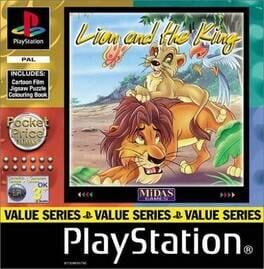
▲
1
▼
While the other Code Monkeys games featuring mockbuster films used images from the films themselves for their sliding puzzle and coloring minigames, Lion and the King instead uses unauthorized frames from the 1965 anime adaptation of the manga Kimba the White Lion. Coincidentally, TV and film adaptations in this franchise have also been used in various plagiarism allegations relating to Disney's 1994 film The Lion King, the movie that Lion and the King plagiarizes.
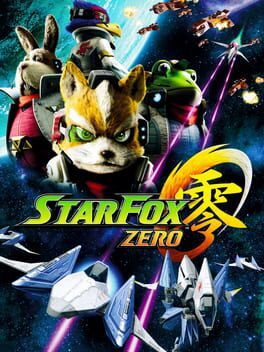
subdirectory_arrow_right Star Fox 2 (Game)
▲
1
▼
By scanning a Fox or Falco amiibo in Star Fox Zero, the Arwings and Walkers will be swapped out with 16-bit era models as seen in Star Fox and Star Fox 2. The old Arwing model's Charge shot does not lock on to targets, which reflects how they did not have a lock-on feature in Star Fox, but only in Star Fox 2 did they have a Charge shot. At the time of Star Fox Zero's release in 2016, Star Fox 2 remained unreleased, with only leaked beta builds being available, including one that allowed you to lock on to enemies with the Charge shot. The game would eventually be completed by Nintendo and released in 2017, but with this lock-on feature removed. Since Nintendo only showed Star Fox 2 to developers actively working on the series, it's believed that PlatinumGames noticed this feature's removal and referenced it in Star Fox Zero over a year before the game's release by making the old Arwings behave accurately to a version of Star Fox 2 that players did not know about.
Franchise: Mario
▲
1
▼
A common belief relating to Rare's work with Nintendo in the 1990s is that the Banjo-Kazooie series and the early family-friendly iteration of the Conker series were originally intended to share a universe with Donkey Kong. By extension, this would also connect them to the Mario series. This belief stemmed from Banjo and Conker's debuts as playable characters in Diddy Kong Racing, other shared characters (e.g. Gnawty, a beaver who appears in both Donkey Kong Country and Banjo-Kazooie), and other planned appearances like the Ice Key from the Banjo-Kazooie series' unused Stop 'n' Swop feature being found in the data for Donkey Kong 64. This interpretation was so popular at one point that the largest English-language Mario fan wiki, Super Mario Wiki, hosted articles about Banjo-Kazooie and Conker characters.
However, Banjo-Kazooie creator Gregg Mayles has stated that Rare's non-Donkey Kong games were never intended to share a universe with Donkey Kong, while Conker's Bad Fur Day director Chris Seavor has gone on to say that Banjo-Kazooie and Conker also do not share a universe.
However, Banjo-Kazooie creator Gregg Mayles has stated that Rare's non-Donkey Kong games were never intended to share a universe with Donkey Kong, while Conker's Bad Fur Day director Chris Seavor has gone on to say that Banjo-Kazooie and Conker also do not share a universe.
Gregg Mayles' statement:
https://twitter.com/Ghoulyboy/status/1087327241346920448
Chris Seavor's statement:
https://twitter.com/GoryDetail/status/1241106477135298566
Mario Wiki staff talk about the removal of Conker and Banjo content:
https://www.marioboards.com/threads/857/
https://twitter.com/Ghoulyboy/status/1087327241346920448
Chris Seavor's statement:
https://twitter.com/GoryDetail/status/1241106477135298566
Mario Wiki staff talk about the removal of Conker and Banjo content:
https://www.marioboards.com/threads/857/
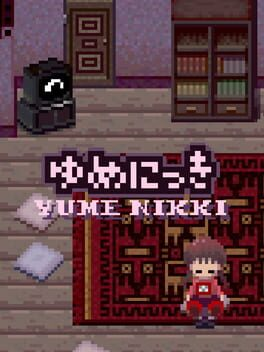
▲
1
▼
 One room that Madotsuki can encounter in the FC House's basement is a blue, castle-like area populated by several goblin-like creatures. The design of these characters appears to reference the Famicom version of Bokosuka Wars, which features a similar monster on the "you win" and "you lose" screens.
One room that Madotsuki can encounter in the FC House's basement is a blue, castle-like area populated by several goblin-like creatures. The design of these characters appears to reference the Famicom version of Bokosuka Wars, which features a similar monster on the "you win" and "you lose" screens.
Vinesauce Joel highlights video featuring clips of Joel comparing the goblins in Yume Nikki to Bokosuka Wars:
https://www.youtube.com/watch?v=gUj67tB01ww
Bokosuka Wars playthrough video showcasing the win screen:
https://www.youtube.com/watch?v=Ak6lMYLXsk4
Direct comparison of the two games' sprites:
https://www.deviantart.com/dexter-the-scorpio/art/Bokosuka-wars-X-Yume-Nikki-GIF-580943480
https://www.youtube.com/watch?v=gUj67tB01ww
Bokosuka Wars playthrough video showcasing the win screen:
https://www.youtube.com/watch?v=Ak6lMYLXsk4
Direct comparison of the two games' sprites:
https://www.deviantart.com/dexter-the-scorpio/art/Bokosuka-wars-X-Yume-Nikki-GIF-580943480

▲
1
▼
 In the earliest builds of Yume Nikki, in-game text was not given windows outside of the game's menus; this feature was not added until Version 0.05. Curiously, while overworld text is generally sparse, Version 0.10 features data for a three-line window, far more than what is normally needed. This appears to line up with a text prompt in Version 0.04 – but not Version 0.06 onward – that appears when Madotsuki attempts to return the swivel chair to her desk in the dream world version of her apartment.
In the earliest builds of Yume Nikki, in-game text was not given windows outside of the game's menus; this feature was not added until Version 0.05. Curiously, while overworld text is generally sparse, Version 0.10 features data for a three-line window, far more than what is normally needed. This appears to line up with a text prompt in Version 0.04 – but not Version 0.06 onward – that appears when Madotsuki attempts to return the swivel chair to her desk in the dream world version of her apartment.Because Version 0.05 is not currently available to the public, it is unknown if this window was indeed used for the prompt in that build or if the text was removed before the idea could be implemented.
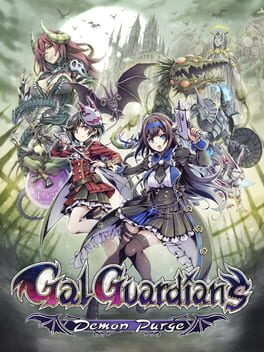
▲
1
▼
Originally, the game was going to be titled "Grim Guardians: Demon Purge", but had to have its name changed due to disputes regarding the trademarked term "Grimguard".
Franchise: Sonic The Hedgehog
▲
4
▼
Sometimes when items are scanned at American gas stations, the sound effect when Sonic collects rings will play on the cash register. It is not known why this sound effect is used, but it's theorized that it stems from Sega's parent company, Sega Sammy Holdings, having some kind of involvement with Gilbarco Veeder-Root, an American technology company that produces point of sale/payment systems and fuel dispensers. The software used in cash registers produced by the company, Gilbarco Passport, is widely used at convenience stores across the United States and was developed by an unspecified third party, which could be Sega Sammy Holdings. The reason why the Sonic ring sound effect was specifically used is likely a result of the merger between Sega and Sammy Corporation allowing the latter to own the rights to some Sega IPs like Sonic the Hedgehog and primarily use them for pachinko machines.
Explanation on YouTube:
https://www.youtube.com/watch?v=VKa0U3CSTuA
Explanation on TikTok:
https://www.tiktok.com/@johnnybonegaming/video/7206110246652185898
https://www.youtube.com/watch?v=VKa0U3CSTuA
Explanation on TikTok:
https://www.tiktok.com/@johnnybonegaming/video/7206110246652185898
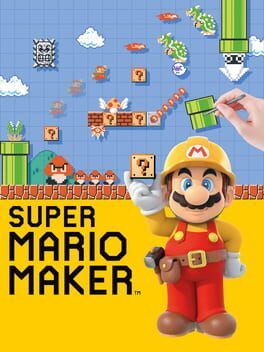
▲
3
▼
In the release build of Super Mario Maker, there were text strings relating to 13 unused Mystery Mushroom costumes:
• BabyMario
• BalloonFight
• EGadd
• GoldenRetri (presumably short for "golden retriever")
• MarioUs (presumably Mario's appearance from what is known in Japan as Super Mario Bros. USA)
• Mashiko (Japanese name of Mary O.)
• MrSaturn (from EarthBound)
• Muncher
• Nabbit
• Popo
• Tetris
• WindowsLogo
Baby Mario, Balloon Fighter, E. Gadd, Mary O., Mr. Saturn, and Nabbit would eventually be added in updates, as would an Ice Climbers costume featuring Popo alongside his friend Nana, while a power-up that turns Mario into his Super Mario Bros. 2 self would be introduced in an update to Super Mario Maker 2.
The most notable names are "Tetris" and "WindowsLogo", two non-Nintendo franchises that otherwise go unrepresented in Super Mario Maker. Tetris was formerly published on handheld and home consoles by Nintendo between the 1980s-1990s, and has been featured through music and Spirits in the Super Smash Bros. series, which is used as the basis for Super Mario Maker's base-game third party costume selection. WindowsLogo seems to be some kind of remnant of a Microsoft Windows operating environment being used to develop the game, as Nintendo has never been involved with the Windows line of software.
• BabyMario
• BalloonFight
• EGadd
• GoldenRetri (presumably short for "golden retriever")
• MarioUs (presumably Mario's appearance from what is known in Japan as Super Mario Bros. USA)
• Mashiko (Japanese name of Mary O.)
• MrSaturn (from EarthBound)
• Muncher
• Nabbit
• Popo
• Tetris
• WindowsLogo
Baby Mario, Balloon Fighter, E. Gadd, Mary O., Mr. Saturn, and Nabbit would eventually be added in updates, as would an Ice Climbers costume featuring Popo alongside his friend Nana, while a power-up that turns Mario into his Super Mario Bros. 2 self would be introduced in an update to Super Mario Maker 2.
The most notable names are "Tetris" and "WindowsLogo", two non-Nintendo franchises that otherwise go unrepresented in Super Mario Maker. Tetris was formerly published on handheld and home consoles by Nintendo between the 1980s-1990s, and has been featured through music and Spirits in the Super Smash Bros. series, which is used as the basis for Super Mario Maker's base-game third party costume selection. WindowsLogo seems to be some kind of remnant of a Microsoft Windows operating environment being used to develop the game, as Nintendo has never been involved with the Windows line of software.
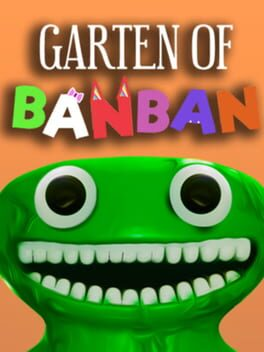
▲
2
▼
In 2023, after seeing online backlash towards Garten of Banban for its barebones quality and gameplay, YouTuber UniqueGeese (real name Mason Myers) decided to try recreating the game in a single week to see if game development could be that easy. He would go on to do so over his spring break, and showed the results of his work in a video titled "I Recreated Garten of Banban in One Week", which would go on to become his most popular video. He released the game as "Garten of Banban: Reincarnated", but would later change the name to simply "Reincarnated" per the request of Garten of Banban developers the Euphoric Brothers in order to avoid confusion regarding the original games. The popularity of Reincarnated inspired Myers to create his own unique horror game, resulting in the development of Indigo Park.
"I Recreated Garten of Banban in One Week" video:
https://www.youtube.com/watch?v=34HLlRRd2XQ
Q&A video about Indigo Park development:
https://www.youtube.com/watch?v=WdR6iTbPgHU
https://www.youtube.com/watch?v=34HLlRRd2XQ
Q&A video about Indigo Park development:
https://www.youtube.com/watch?v=WdR6iTbPgHU
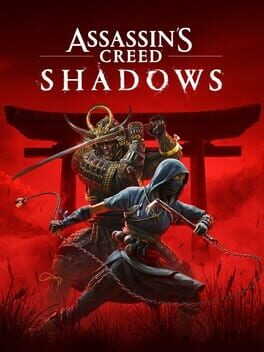
▲
-1
▼
One of the game's dual protagonists Yasuke, an African samurai, is the first main character in the series to be based on a real historical figure, but his real-life identity and status serving under Japanese daimyo Oda Nobunaga has been the subject of a contentious debate among historians. There are few scholarly/historical resources available describing him and his life, and no known resources from when he was alive that refer to him as a samurai, with the most common belief being his title was a retainer.
His reveal as a lead in the game on May 15, 2024 caused polarizing reactions worldwide on social media. Fans critical of the decision claimed Ubisoft were going against the series' penchant for accurate historical backgrounds and misrepresented Japan, which the series had never covered in-depth, by inflating Yasuke's role in history and not having both protagonists be Japanese (the other protagonist, Naoe, is Japanese), claiming he was not actually a samurai. Fans in support of his role claiming he was actually a samurai called these objections racist and based on narrow-minded arguments and inferences, with some claiming that Asian samurai protagonists in media were oversaturated and that complaints would be the same if the game was set in Africa and starred an African protagonist. This intense fighting led to an edit war on Yasuke's English Wikipedia article, with administrators publicly calling its Talk page "a complete dumpster fire". As of July 3, the consensus that the Talk page reached appears to be that the available historical resources are inconclusive as to if he was or was not a samurai, but that scholars consistently describe Yasuke as a samurai without any sources found where scholars do not describe him as one.
This lack of clarity allows popular media to take creative liberties in adapting him, often depicting him as a high-ranking samurai, and Ubisoft seemed to take a similar direction from the outset. A press release at the game's announcement stated:
Despite the header used, the quote is carefully worded to stop short of directly calling Yasuke a samurai, with more advertising describing him as a "samurai of historical legend". Game director Charles Benoit later acknowledged his life "is surrounded by mysteries" and that "[Yasuke] told us to tell" his story seen in the game, which was also described by associate narrative director Brooke Davies as historical fiction.
Creative director Jonathan Dumont stated in interviews with Famitsu on May 15 that they chose Yasuke to fit with the story of a foreigner who fights off oppressing forces like the Portuguese slave trade, while exploring a country unknown to him alongside the player, stating that they were "first looking for "our samurai," someone who could be our non-Japanese eyes". The following day, the interviews were edited to remove this quote, and to change quotes either directly or contextually referring to Yasuke as an "outsider" to being a "foreign-born samurai". After further mounting controversy, Ubisoft posted a statement to Twitter in English and Japanese on July 23 apologizing for elements in their promotional materials that "caused concern within the Japanese community", reiterating that the game's story was intended to be historical fiction and not an accurate recreation of events, and that Yasuke's real-life status was "a matter of debate and discussion". The Japanese statement received Community Notes pointing out that the stance taken was contradictory, citing several quotes from both the Famitsu interviews and an Xbox interview that emphasized confirming historical accuracy, but was removed from the statement hours later.
His reveal as a lead in the game on May 15, 2024 caused polarizing reactions worldwide on social media. Fans critical of the decision claimed Ubisoft were going against the series' penchant for accurate historical backgrounds and misrepresented Japan, which the series had never covered in-depth, by inflating Yasuke's role in history and not having both protagonists be Japanese (the other protagonist, Naoe, is Japanese), claiming he was not actually a samurai. Fans in support of his role claiming he was actually a samurai called these objections racist and based on narrow-minded arguments and inferences, with some claiming that Asian samurai protagonists in media were oversaturated and that complaints would be the same if the game was set in Africa and starred an African protagonist. This intense fighting led to an edit war on Yasuke's English Wikipedia article, with administrators publicly calling its Talk page "a complete dumpster fire". As of July 3, the consensus that the Talk page reached appears to be that the available historical resources are inconclusive as to if he was or was not a samurai, but that scholars consistently describe Yasuke as a samurai without any sources found where scholars do not describe him as one.
This lack of clarity allows popular media to take creative liberties in adapting him, often depicting him as a high-ranking samurai, and Ubisoft seemed to take a similar direction from the outset. A press release at the game's announcement stated:
"Yasuke: A Real-Life Samurai:
Ubisoft Quebec wanted to include a Samurai, and Yasuke's story was open-ended enough to allow for creativity; there are still plenty of questions and speculation surrounding him. The fascinating facts, though, were undisputable: of African origin, he arrived in Japan enslaved by the Portuguese; he impressed with size, strength, and wits; he served under the Japanese daimyo Oda Nobunaga. There must have been something exceptional about Yasuke to succeed in the service of a personality like Nobunaga's, [...] and the goal has been to expound on this in [the game] through his curiosity, openness, respect for values and tradition, valor, warmth, and charisma."
Ubisoft Quebec wanted to include a Samurai, and Yasuke's story was open-ended enough to allow for creativity; there are still plenty of questions and speculation surrounding him. The fascinating facts, though, were undisputable: of African origin, he arrived in Japan enslaved by the Portuguese; he impressed with size, strength, and wits; he served under the Japanese daimyo Oda Nobunaga. There must have been something exceptional about Yasuke to succeed in the service of a personality like Nobunaga's, [...] and the goal has been to expound on this in [the game] through his curiosity, openness, respect for values and tradition, valor, warmth, and charisma."
Despite the header used, the quote is carefully worded to stop short of directly calling Yasuke a samurai, with more advertising describing him as a "samurai of historical legend". Game director Charles Benoit later acknowledged his life "is surrounded by mysteries" and that "[Yasuke] told us to tell" his story seen in the game, which was also described by associate narrative director Brooke Davies as historical fiction.
Creative director Jonathan Dumont stated in interviews with Famitsu on May 15 that they chose Yasuke to fit with the story of a foreigner who fights off oppressing forces like the Portuguese slave trade, while exploring a country unknown to him alongside the player, stating that they were "first looking for "our samurai," someone who could be our non-Japanese eyes". The following day, the interviews were edited to remove this quote, and to change quotes either directly or contextually referring to Yasuke as an "outsider" to being a "foreign-born samurai". After further mounting controversy, Ubisoft posted a statement to Twitter in English and Japanese on July 23 apologizing for elements in their promotional materials that "caused concern within the Japanese community", reiterating that the game's story was intended to be historical fiction and not an accurate recreation of events, and that Yasuke's real-life status was "a matter of debate and discussion". The Japanese statement received Community Notes pointing out that the stance taken was contradictory, citing several quotes from both the Famitsu interviews and an Xbox interview that emphasized confirming historical accuracy, but was removed from the statement hours later.
Game website with "samurai of historical legend" quote:
https://www.ubisoft.com/en-us/game/assassins-creed/shadows
Ubisoft press release:
https://news.ubisoft.com/en-us/article/2LH4Ael4X1TlNJY3B3aYg5/assassins-creed-shadows-launches-november-15-features-dual-protagonists-in-feudal-japan
Ubisoft Forward - June 10, 2024:
https://www.youtube.com/watch?v=zPoJUPrCkkg#t=4602s
IGN Japan interview with Brooke Davies:
https://www.youtube.com/watch?v=bqwitaREyd0
Ubisoft article with several videos explaining historical backgrounds behind previous Assassin's Creed games:
https://news.ubisoft.com/en-us/article/6d4zQXyH0VF6z75Ab7jfss/discover-the-real-history-behind-every-assassins-creed
IGN articles:
https://www.ign.com/articles/when-and-where-is-assassins-creed-shadows-set
https://www.ign.com/articles/assassins-creed-shadows-yasuke-asian-protagonist
TheGamer article:
https://www.thegamer.com/african-assassins-creed-shadows-controversy/
Time article:
https://time.com/6978997/assassins-creed-shadow-yasuke-controversy/
Forbes article mentioning Wikipedia edit war and international reactions:
https://www.forbes.com/sites/olliebarder/2024/05/15/japanese-fans-are-puzzled-that-yasuke-is-in-assassins-creed-shadows/
Yasuke English Wikipedia article (Note: while much of this controversy occurred on English language Wikipedia, bear in mind that Wikipedia articles by themselves are not reliable sources for historical research, and the English article is not a uniform representation of the information on Yasuke across the different language versions of Wikipedia that have this article. There are varying primary, secondary, historical and pop culture sources suggested for and used in all of these articles either backing up verified information about him, or making different claims that may not be accurate.):
https://en.wikipedia.org/wiki/Yasuke
https://en.wikipedia.org/wiki/Talk:Yasuke
Wikipedia administrator discussion:
https://web.archive.org/web/20240518220622/https://en.wikipedia.org/wiki/Wikipedia:Administrators'_noticeboard/Incidents#Talk:Yasuke_is_a_complete_dumpster_fire
Earliest archive of original Famitsu interview (in Japanese; English machine translations for all archives of this article compared between Google Translate and DeepL prior to publishing this submission. Deleted quote in Japanese is "まず“私たちの侍”、つまり日本人ではない私たちの目になれる人物を探していましたが、これは") (May 15):
https://web.archive.org/web/20240515185159/https://www.famitsu.com/article/202405/5194
Archived edited interview (May 16):
https://web.archive.org/web/20240516194746/https://www.famitsu.com/article/202405/5194
Latest archived edit (May 18):
https://web.archive.org/web/20240518034336/https://www.famitsu.com/article/202405/5194
Ubisoft July statement (in English and Japanese; third link contains archived screenshots of the Japanese Community Notes):
https://x.com/assassinscreed/status/1815674592444187116
https://x.com/UBISOFT_JAPAN/status/1815674629643719061
https://x.com/DLibryum/status/1816342689127772542
Xbox interview:
https://news.xbox.com/ja-jp/2024/05/16/assassins-creed-shadows-interview/
https://www.ubisoft.com/en-us/game/assassins-creed/shadows
Ubisoft press release:
https://news.ubisoft.com/en-us/article/2LH4Ael4X1TlNJY3B3aYg5/assassins-creed-shadows-launches-november-15-features-dual-protagonists-in-feudal-japan
Ubisoft Forward - June 10, 2024:
https://www.youtube.com/watch?v=zPoJUPrCkkg#t=4602s
IGN Japan interview with Brooke Davies:
https://www.youtube.com/watch?v=bqwitaREyd0
Ubisoft article with several videos explaining historical backgrounds behind previous Assassin's Creed games:
https://news.ubisoft.com/en-us/article/6d4zQXyH0VF6z75Ab7jfss/discover-the-real-history-behind-every-assassins-creed
IGN articles:
https://www.ign.com/articles/when-and-where-is-assassins-creed-shadows-set
https://www.ign.com/articles/assassins-creed-shadows-yasuke-asian-protagonist
TheGamer article:
https://www.thegamer.com/african-assassins-creed-shadows-controversy/
Time article:
https://time.com/6978997/assassins-creed-shadow-yasuke-controversy/
Forbes article mentioning Wikipedia edit war and international reactions:
https://www.forbes.com/sites/olliebarder/2024/05/15/japanese-fans-are-puzzled-that-yasuke-is-in-assassins-creed-shadows/
Yasuke English Wikipedia article (Note: while much of this controversy occurred on English language Wikipedia, bear in mind that Wikipedia articles by themselves are not reliable sources for historical research, and the English article is not a uniform representation of the information on Yasuke across the different language versions of Wikipedia that have this article. There are varying primary, secondary, historical and pop culture sources suggested for and used in all of these articles either backing up verified information about him, or making different claims that may not be accurate.):
https://en.wikipedia.org/wiki/Yasuke
https://en.wikipedia.org/wiki/Talk:Yasuke
Wikipedia administrator discussion:
https://web.archive.org/web/20240518220622/https://en.wikipedia.org/wiki/Wikipedia:Administrators'_noticeboard/Incidents#Talk:Yasuke_is_a_complete_dumpster_fire
Earliest archive of original Famitsu interview (in Japanese; English machine translations for all archives of this article compared between Google Translate and DeepL prior to publishing this submission. Deleted quote in Japanese is "まず“私たちの侍”、つまり日本人ではない私たちの目になれる人物を探していましたが、これは") (May 15):
https://web.archive.org/web/20240515185159/https://www.famitsu.com/article/202405/5194
Archived edited interview (May 16):
https://web.archive.org/web/20240516194746/https://www.famitsu.com/article/202405/5194
Latest archived edit (May 18):
https://web.archive.org/web/20240518034336/https://www.famitsu.com/article/202405/5194
Ubisoft July statement (in English and Japanese; third link contains archived screenshots of the Japanese Community Notes):
https://x.com/assassinscreed/status/1815674592444187116
https://x.com/UBISOFT_JAPAN/status/1815674629643719061
https://x.com/DLibryum/status/1816342689127772542
Xbox interview:
https://news.xbox.com/ja-jp/2024/05/16/assassins-creed-shadows-interview/
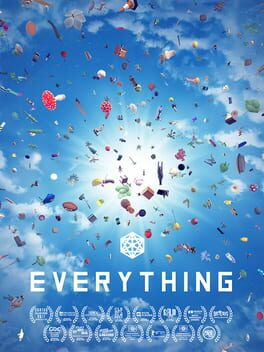
▲
1
▼
The game's creator David O'Reilly was friends with Daniel Kwan and Daniel Scheinert, also known as the "Daniels", the two writers and directors of the 2022 film "Everything Everywhere All at Once". During the climax of the film, protagonist Evelyn Wang and antagonist Jobu Tupaki appear in an alternate universe where they are both rocks overlooking a vista. In an interview with the Daniels, they revealed that this scene had two major influences. One being the children's book "Sylvester and the Magic Pebble" (about a donkey who turns into a rock and is isolated from his family), while the other inspiration was the core concept of O'Reilly's video game Everything, where the player can play as "literally anything". They described it as follows:
Kwan: "Literally, you can be a toenail clipping, you can be a fire hydrant, you can be an antelope, you can be a rock. And there’s maybe a dozen different kind of rocks you can be. Just rolling around —"
Scheinert: "— just feels good."
Kwan: "It feels good and that is really beautiful. The whole purpose of the game is you have to look at it and not press anything. It's a game where the longer you don't press anything —"
Scheinert: "— the more you progress."
Kwan: "He called it a relax-'em-up instead of a shoot-'em-up."
Scheinert: "— just feels good."
Kwan: "It feels good and that is really beautiful. The whole purpose of the game is you have to look at it and not press anything. It's a game where the longer you don't press anything —"
Scheinert: "— the more you progress."
Kwan: "He called it a relax-'em-up instead of a shoot-'em-up."
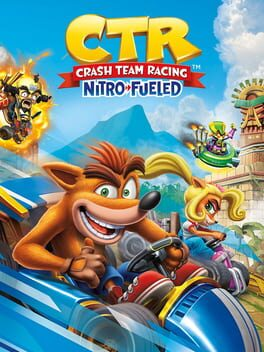
▲
1
▼
The Lumberjack Lab Assistant enemy from Crash Bandicoot 2: Cortex Strikes Back is usually portrayed wearing a red hat and shirt with blue overalls. This design is used for his NPC role in the Dragon Mines stage of Crash Team Racing Nitro-Fueled, but as a skin for the playable version of the Lab Assistant in that game, his colors are inverted, possibly to downplay potential similarities to Mario.
Lumberjack Lab Assistant in Crash Bandicoot 2: Cortex Strikes Back:
https://www.youtube.com/watch?v=wOUV82EK-hA?t=58s
NPC Lumberjack in Crash Team Racing Nitro-Fueled (split-second look):
https://www.youtube.com/watch?v=eGKaDGF5Dw4?t=26s
Playable Lumberjack:
https://www.youtube.com/watch?v=jTtebC4FLFE?t=636s
https://www.youtube.com/watch?v=wOUV82EK-hA?t=58s
NPC Lumberjack in Crash Team Racing Nitro-Fueled (split-second look):
https://www.youtube.com/watch?v=eGKaDGF5Dw4?t=26s
Playable Lumberjack:
https://www.youtube.com/watch?v=jTtebC4FLFE?t=636s
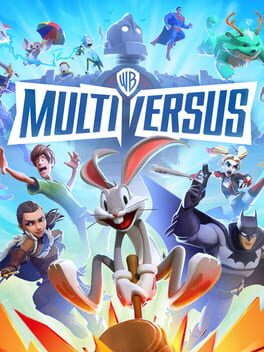
▲
2
▼
MultiVersus lead writer Eric Stirpē has stated that he writes each fighter as a "Multiversus version" by picking a point in a franchise's history for them to be chosen from by Reindog, in an effort to keep their dialogue in line with the source material. Some fighters from a single franchise are chosen from different time periods within it, but the points when they are chosen are not canon to the source material or the game's plot. It's unknown how every fighter fits into this writing guide, but it creates inconsistencies with some character designs in the game:
• Stripe and Gizmo were chosen just before Stripe's death in the first Gremlins film.
• Finn and Jake were chosen during the events of Adventure Time: Islands, though the lack of Finn's prosthetic arm is not explained, and Fern was chosen before he became a villain in Season 9 of Adventure Time.
• Steven and Garnet were chosen during Season 2 of Steven Universe.
• Bugs Bunny was not chosen, but rather emerged from hiding since the 1940s through a "hole in the page", with him being referred to as a "timeline hopper".
• Taz is from the 1990s (presumably tying him in to Taz-Mania).
• Marvin was chosen during the events of Space Jam: A New Legacy, and LeBron James was chosen two days after the end of the film.
• Tom and Jerry are from the 1960s, but are portrayed with a modern art style that does not resemble either the Gene Deitch or Chuck Jones runs of theatrical shorts from that time.
• Shaggy was chosen one year after the end of Scooby-Doo, Where Are You?, while Velma was chosen from an unspecified "cancelled 2000s reboot".
• The Iron Giant was chosen while returning to America after he re-assembles himself at the end of the film.
• Arya Stark was chosen during either Season 6 or 7 of the Game of Thrones TV series.
• Stirpē considers the DC Comics heroes and villains to all be original interpretations of the characters created for Multiversus.
• Stripe and Gizmo were chosen just before Stripe's death in the first Gremlins film.
• Finn and Jake were chosen during the events of Adventure Time: Islands, though the lack of Finn's prosthetic arm is not explained, and Fern was chosen before he became a villain in Season 9 of Adventure Time.
• Steven and Garnet were chosen during Season 2 of Steven Universe.
• Bugs Bunny was not chosen, but rather emerged from hiding since the 1940s through a "hole in the page", with him being referred to as a "timeline hopper".
• Taz is from the 1990s (presumably tying him in to Taz-Mania).
• Marvin was chosen during the events of Space Jam: A New Legacy, and LeBron James was chosen two days after the end of the film.
• Tom and Jerry are from the 1960s, but are portrayed with a modern art style that does not resemble either the Gene Deitch or Chuck Jones runs of theatrical shorts from that time.
• Shaggy was chosen one year after the end of Scooby-Doo, Where Are You?, while Velma was chosen from an unspecified "cancelled 2000s reboot".
• The Iron Giant was chosen while returning to America after he re-assembles himself at the end of the film.
• Arya Stark was chosen during either Season 6 or 7 of the Game of Thrones TV series.
• Stirpē considers the DC Comics heroes and villains to all be original interpretations of the characters created for Multiversus.
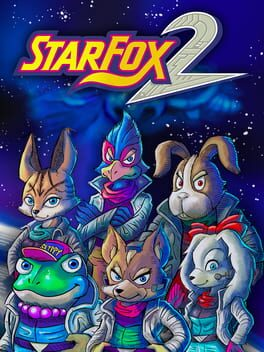
▲
1
▼
 When assets from Star Fox 2 were leaked in the 2020 Nintendo Gigaleak, one character that caught people's attention was what appeared to be a human woman. Some fans and news outlets assumed the character to be black based on her frilly hair and large lips, but palettes were eventually discovered that revealed her to be fair-skinned. The human woman's sprites have the same filename as Miyu and Fay's in the final game, and her two sprites' facial structures resemble Miyu and Fay's prototype sprites (the latter being a sheep instead of a poodle), suggesting she was simply a placeholder meant to give a human reference for Miyu and Fay's anthropomorphic expressions.
When assets from Star Fox 2 were leaked in the 2020 Nintendo Gigaleak, one character that caught people's attention was what appeared to be a human woman. Some fans and news outlets assumed the character to be black based on her frilly hair and large lips, but palettes were eventually discovered that revealed her to be fair-skinned. The human woman's sprites have the same filename as Miyu and Fay's in the final game, and her two sprites' facial structures resemble Miyu and Fay's prototype sprites (the latter being a sheep instead of a poodle), suggesting she was simply a placeholder meant to give a human reference for Miyu and Fay's anthropomorphic expressions.
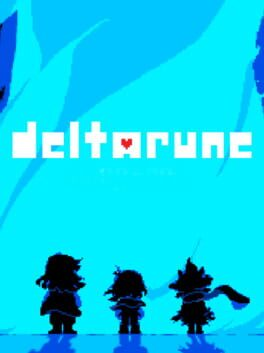
▲
1
▼
 In 2012, Toby Fox posted several Yume Nikki fan songs to his Tumblr account. One of these, "waltz of seccom masada" (named after a fan nickname for the piano-playing NPC in the spaceship area), bears strong similarities to the Deltarune track "Man" (heard in the hidden rooms where Kris can obtain an egg from an invisible NPC behind a tree), indicating that Fox repurposed and rearranged the song for his own project years later.
In 2012, Toby Fox posted several Yume Nikki fan songs to his Tumblr account. One of these, "waltz of seccom masada" (named after a fan nickname for the piano-playing NPC in the spaceship area), bears strong similarities to the Deltarune track "Man" (heard in the hidden rooms where Kris can obtain an egg from an invisible NPC behind a tree), indicating that Fox repurposed and rearranged the song for his own project years later.
Deltarune - Secret tree rooms featuring "Man":
https://www.youtube.com/watch?v=BYbzt3r97ZE
The Cutting Room Floor article:
https://tcrf.net/Prerelease:Deltarune/Early_Development#fwugradiation_Tumblr
Toby Fox's Tumblr post:
https://fwugradiation.tumblr.com/post/20325508850/made-up-yume-nikkis-dark-tunnel-amphitheater
https://www.youtube.com/watch?v=BYbzt3r97ZE
The Cutting Room Floor article:
https://tcrf.net/Prerelease:Deltarune/Early_Development#fwugradiation_Tumblr
Toby Fox's Tumblr post:
https://fwugradiation.tumblr.com/post/20325508850/made-up-yume-nikkis-dark-tunnel-amphitheater
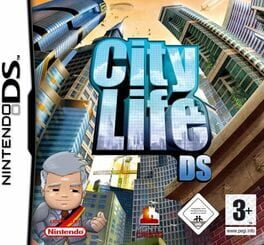
▲
3
▼
In 2022, the English rock band Arctic Monkeys released a song titled "Sculptures of Anything Goes", featuring the following lyric in the last verse of the song:
This lyric became the subject of news articles when fans on the music lyrics website Genius initially determined that it was referencing the obscure Nintendo DS game City Life DS, which only released in France in 2008 and the United Kingdom in 2009, and did not sell as well as previous games in the City Life series. Fans theorized that the difficulty in finding a copy of the game referenced in the lyric stemmed from Nintendo eventually discontinuing the DS family of systems to support future consoles. They also cited the closure of the Nintendo 3DS/Wii U versions of the Nintendo eShop as another possibility, but this was unfounded as City Life DS was only officially released as a physical cartridge and not part of the Wii U Virtual Console's Nintendo DS library.
However, it was confirmed in an interview with the band's frontman Alex Turner by Rolling Stone Germany on the day the song released that the lyric was not about City Life DS. He attributed the lyric to the works of author David Foster Wallace, most likely as a reference to his book "Infinite Jest" where the characters consume entertainment in the form of cartridges, which could also be referring to Turner's growing struggle to appeal and relate to Arctic Monkeys' audience from their earlier years as their sound and image changed later on.
"The simulation cartridge for City Life '09 is pretty tricky to come by."
This lyric became the subject of news articles when fans on the music lyrics website Genius initially determined that it was referencing the obscure Nintendo DS game City Life DS, which only released in France in 2008 and the United Kingdom in 2009, and did not sell as well as previous games in the City Life series. Fans theorized that the difficulty in finding a copy of the game referenced in the lyric stemmed from Nintendo eventually discontinuing the DS family of systems to support future consoles. They also cited the closure of the Nintendo 3DS/Wii U versions of the Nintendo eShop as another possibility, but this was unfounded as City Life DS was only officially released as a physical cartridge and not part of the Wii U Virtual Console's Nintendo DS library.
However, it was confirmed in an interview with the band's frontman Alex Turner by Rolling Stone Germany on the day the song released that the lyric was not about City Life DS. He attributed the lyric to the works of author David Foster Wallace, most likely as a reference to his book "Infinite Jest" where the characters consume entertainment in the form of cartridges, which could also be referring to Turner's growing struggle to appeal and relate to Arctic Monkeys' audience from their earlier years as their sound and image changed later on.
Arctic Monkeys - Sculptures of Anything Goes:
https://www.youtube.com/watch?v=KQsrIxyoJdE
City Life DS release dates:
https://web.archive.org/web/20180109182552/https://www.gamespot.com/city-life-ds/
Alex Turner Rolling Stone Germany interview:
https://www.rollingstone.de/arctic-monkeys-alex-turner-im-grossen-interview-zum-neuen-album-the-car-2508705/
Speculation news coverage:
https://www.nme.com/news/gaming-news/arctic-monkeys-sneak-an-obscure-nintendo-reference-into-the-car-3333593
https://www.gamesradar.com/an-obscure-nintendo-city-builder-has-resurfaced-on-the-new-arctic-monkeys-album/
https://www.nintendolife.com/news/2022/10/random-arctic-monkeys-song-potentially-makes-obscure-ds-city-builder-reference
https://indigomusic.com/pop-cultures/arctic-monkeys-made-a-subtle-nintendo-reference-in-their-track-the-car?amp=1
https://www.youtube.com/watch?v=KQsrIxyoJdE
City Life DS release dates:
https://web.archive.org/web/20180109182552/https://www.gamespot.com/city-life-ds/
Alex Turner Rolling Stone Germany interview:
https://www.rollingstone.de/arctic-monkeys-alex-turner-im-grossen-interview-zum-neuen-album-the-car-2508705/
Speculation news coverage:
https://www.nme.com/news/gaming-news/arctic-monkeys-sneak-an-obscure-nintendo-reference-into-the-car-3333593
https://www.gamesradar.com/an-obscure-nintendo-city-builder-has-resurfaced-on-the-new-arctic-monkeys-album/
https://www.nintendolife.com/news/2022/10/random-arctic-monkeys-song-potentially-makes-obscure-ds-city-builder-reference
https://indigomusic.com/pop-cultures/arctic-monkeys-made-a-subtle-nintendo-reference-in-their-track-the-car?amp=1
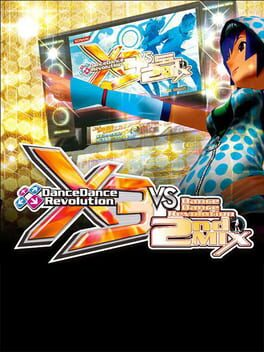
subdirectory_arrow_right Dance Dance Revolution II (Game), Dance Dance Revolution Hottest Party 5 (Game)
▲
1
▼
Dance Dance Revolution X3 VS 2ndMix's interface and background music strongly resemble that which appeared in Dance Dance Revolution II/Hottest Party 5. This connection may possibly stem from both games releasing within a month of each other, suggesting they were developed simultaneously and shared development assets.
Article on List of North American Console DDR Games:
https://remywiki.com/North_American_DanceDanceRevolution_Games#Nintendo_Wii
RemyWiki articles on DDR X3 VS 2ndMix and DDRII/HP5:
https://remywiki.com/AC_DDR_X3
https://remywiki.com/CS_DDR_II
Video of DDR II Interface:
https://www.youtube.com/watch?v=jbOi1uCYtko?t=36
Video of DDR X3 VS 2ndMix Interface:
https://www.youtube.com/watch?v=676PuAyLAts
https://remywiki.com/North_American_DanceDanceRevolution_Games#Nintendo_Wii
RemyWiki articles on DDR X3 VS 2ndMix and DDRII/HP5:
https://remywiki.com/AC_DDR_X3
https://remywiki.com/CS_DDR_II
Video of DDR II Interface:
https://www.youtube.com/watch?v=jbOi1uCYtko?t=36
Video of DDR X3 VS 2ndMix Interface:
https://www.youtube.com/watch?v=676PuAyLAts
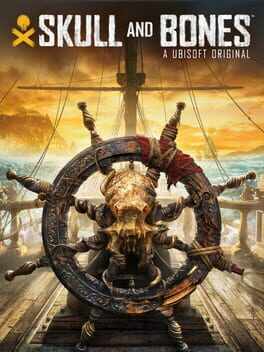
▲
1
▼
Despite incorporating several elements common in a live-service game (i.e. an in-game store, a battle pass, seasonal events, and premium currency), Skull and Bones was given a price tag of $70. Yves Guillemot, the CEO of Ubisoft, justified this during an investors call before the game's release, stating:
It's worth noting, however, that the game cost $200 million due to its decade-long development, with Ubisoft admitting that they did not think they would be able to break even due to its poor launch. Knowing this, it can be inferred that Ubisoft insisted on referring to Skull and Bones as a "quadruple-A" title not because of the scope of the project, but for how abnormally long it took to produce and raised the price to recoup costs, because this was not the first or only game they called a AAAA title in the past. It was discovered as far back as 2020 on the LinkedIn pages of several Ubisoft employees that they referred to Skull and Bones, the also long-delayed Beyond Good & Evil 2, and later Avatar: Frontiers of Pandora, all games with development times lasting at least six years, as AAAA titles in their work experience.
"It's a very big game and we feel that people will really see how vast and complete that game is. So it's a really full triple-A, quadruple-A game that will deliver in the long run."
It's worth noting, however, that the game cost $200 million due to its decade-long development, with Ubisoft admitting that they did not think they would be able to break even due to its poor launch. Knowing this, it can be inferred that Ubisoft insisted on referring to Skull and Bones as a "quadruple-A" title not because of the scope of the project, but for how abnormally long it took to produce and raised the price to recoup costs, because this was not the first or only game they called a AAAA title in the past. It was discovered as far back as 2020 on the LinkedIn pages of several Ubisoft employees that they referred to Skull and Bones, the also long-delayed Beyond Good & Evil 2, and later Avatar: Frontiers of Pandora, all games with development times lasting at least six years, as AAAA titles in their work experience.
Quote source:
https://www.pcgamer.com/ubisoft-ceo-defends-skull-and-bones-dollar60-price-tag-says-its-a-quadruple-a-game/
Game budget:
https://insider-gaming.com/skull-and-bones-players-total/
2020 LinkedIn page mentions:
https://screenrant.com/ubisoft-beyond-good-evil-skull-bones-aaaa-games/
2022 Avatar: Frontiers of Pandora AAAA game label:
https://tech4gamers.com/avatar-frontiers-of-pandora/
https://www.pcgamer.com/ubisoft-ceo-defends-skull-and-bones-dollar60-price-tag-says-its-a-quadruple-a-game/
Game budget:
https://insider-gaming.com/skull-and-bones-players-total/
2020 LinkedIn page mentions:
https://screenrant.com/ubisoft-beyond-good-evil-skull-bones-aaaa-games/
2022 Avatar: Frontiers of Pandora AAAA game label:
https://tech4gamers.com/avatar-frontiers-of-pandora/
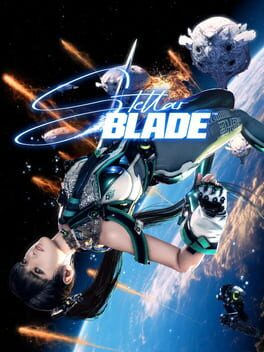
This trivia has been marked as "Not Safe for Work".
It may not be appropriate for all visitors and definitely isn't appropriate for work or school environments.
Click here to unhide it.
It may not be appropriate for all visitors and definitely isn't appropriate for work or school environments.
Click here to unhide it.
▲
1
▼
Sexualization complaints:
https://www.denofgeek.com/games/stellar-blade-controversy-explained/
South Korean rating:
https://en.as.com/meristation/news/stellar-blade-gets-an-adults-only-rating-due-to-nudity-and-explicit-gore-n/
Design choice quote:
https://fandomwire.com/hyung-tae-kim-stellar-blade-avoid-controversy/
Day 1 patch censorship:
https://esports.gg/news/stellar-blade/players-outraged-at-unexpected-stellar-blade-outfit-censorship/
Compilation of outfits in base game before Day 1 patch (uncensored versions of Cybernetic Bondage at 2:30, and Holiday Rabbit at 4:52):
https://www.youtube.com/watch?v=fMT6z9xejeA
Compilation of outfits after Day 1 patch (censored versions of Cybernetic Bondage at 1:03, Holiday Rabbit at 2:19, and Moutan Peony at 3:02):
https://www.youtube.com/watch?v=kAcvYBGPoGk
Nano Suit tutorial pop-up montage with uncensored Moutan Peony costume (this is the only footage I could find of anyone sitting through this video start to finish):
https://www.youtube.com/watch?v=eHJhViruQKM?t=3761
Stellar Blade uncensored claim tweet:
https://twitter.com/StellarBlade/status/1781976139688534449
Video of Hyung-Tae Kim defending update changes:
https://www.reddit.com/r/stellarblade/comments/1cdlllp/directors_answer_to_the_change_in_the_outfitvideo/
GameAbout interview with Kim (article in Korean):
https://www.gameabout.com/news/articleView.html?idxno=87017
Holiday Rabbit and Cybernetic Bondage costume reversal:
https://www.pushsquare.com/news/2024/05/stellar-blade-ps5-quietly-adds-uncensored-new-costumes-in-controversy-aftermath
IGN interview with Yoko Taro and Kim:
https://www.ign.com/articles/stellar-blade-x-nier-automata-taro-yoko-hyung-tae-kim
https://www.denofgeek.com/games/stellar-blade-controversy-explained/
South Korean rating:
https://en.as.com/meristation/news/stellar-blade-gets-an-adults-only-rating-due-to-nudity-and-explicit-gore-n/
Design choice quote:
https://fandomwire.com/hyung-tae-kim-stellar-blade-avoid-controversy/
Day 1 patch censorship:
https://esports.gg/news/stellar-blade/players-outraged-at-unexpected-stellar-blade-outfit-censorship/
Compilation of outfits in base game before Day 1 patch (uncensored versions of Cybernetic Bondage at 2:30, and Holiday Rabbit at 4:52):
https://www.youtube.com/watch?v=fMT6z9xejeA
Compilation of outfits after Day 1 patch (censored versions of Cybernetic Bondage at 1:03, Holiday Rabbit at 2:19, and Moutan Peony at 3:02):
https://www.youtube.com/watch?v=kAcvYBGPoGk
Nano Suit tutorial pop-up montage with uncensored Moutan Peony costume (this is the only footage I could find of anyone sitting through this video start to finish):
https://www.youtube.com/watch?v=eHJhViruQKM?t=3761
Stellar Blade uncensored claim tweet:
https://twitter.com/StellarBlade/status/1781976139688534449
Video of Hyung-Tae Kim defending update changes:
https://www.reddit.com/r/stellarblade/comments/1cdlllp/directors_answer_to_the_change_in_the_outfitvideo/
GameAbout interview with Kim (article in Korean):
https://www.gameabout.com/news/articleView.html?idxno=87017
Holiday Rabbit and Cybernetic Bondage costume reversal:
https://www.pushsquare.com/news/2024/05/stellar-blade-ps5-quietly-adds-uncensored-new-costumes-in-controversy-aftermath
IGN interview with Yoko Taro and Kim:
https://www.ign.com/articles/stellar-blade-x-nier-automata-taro-yoko-hyung-tae-kim
